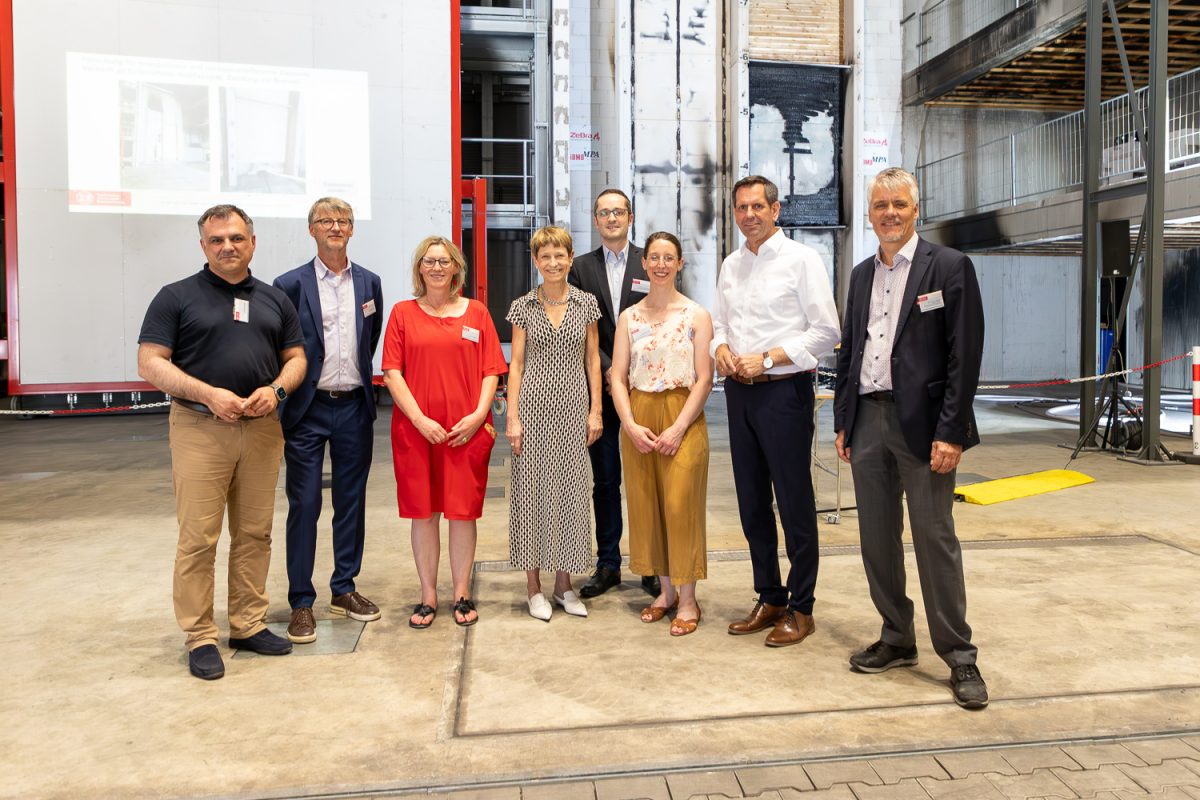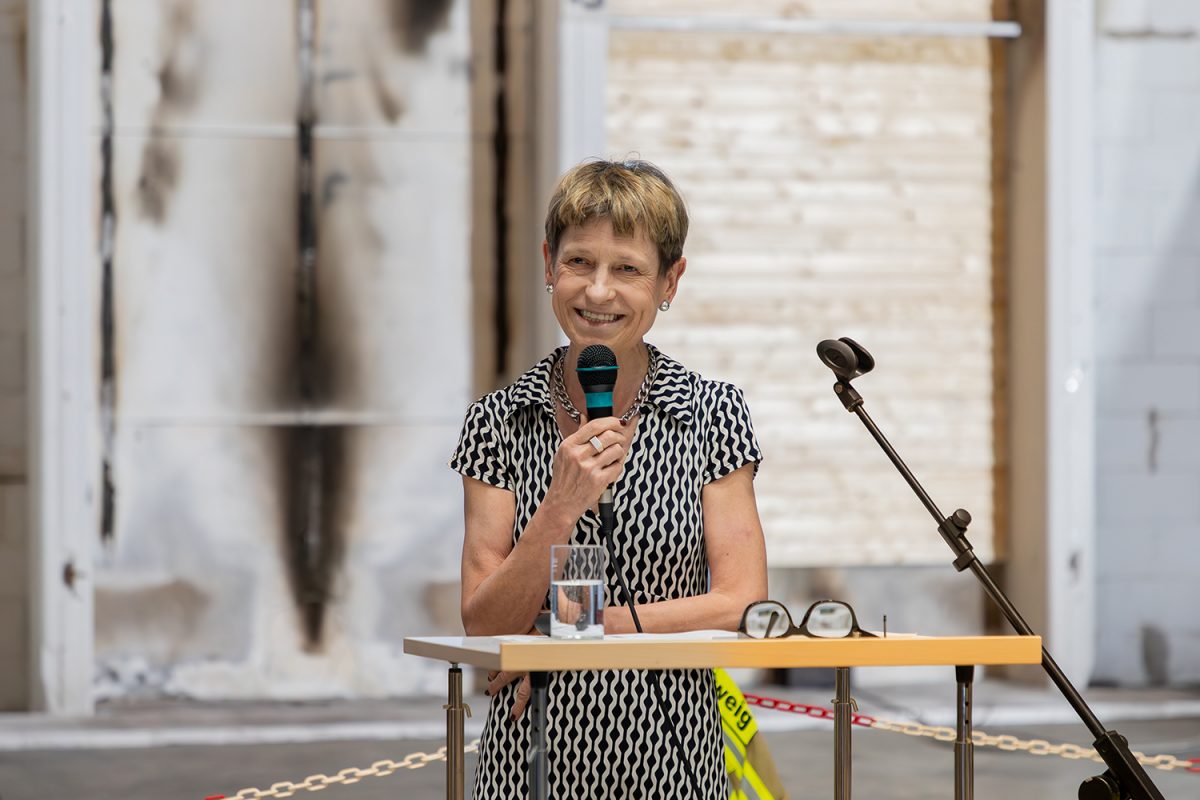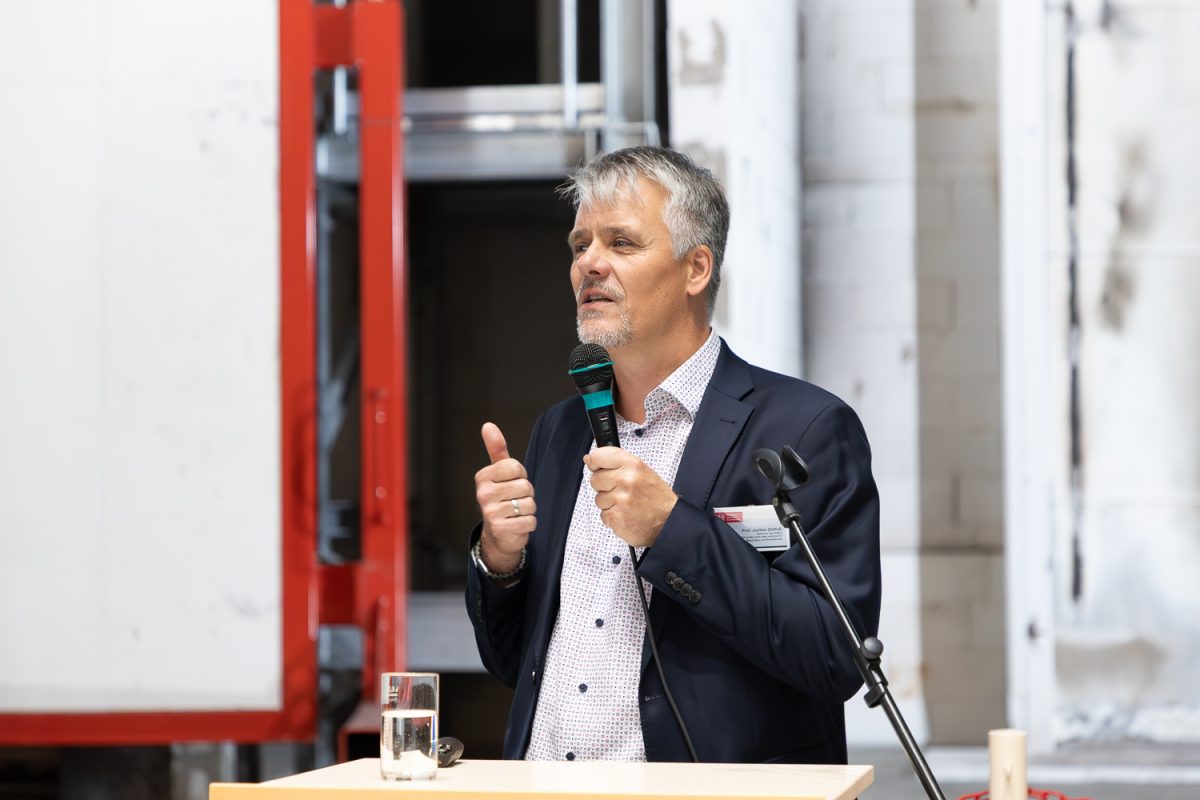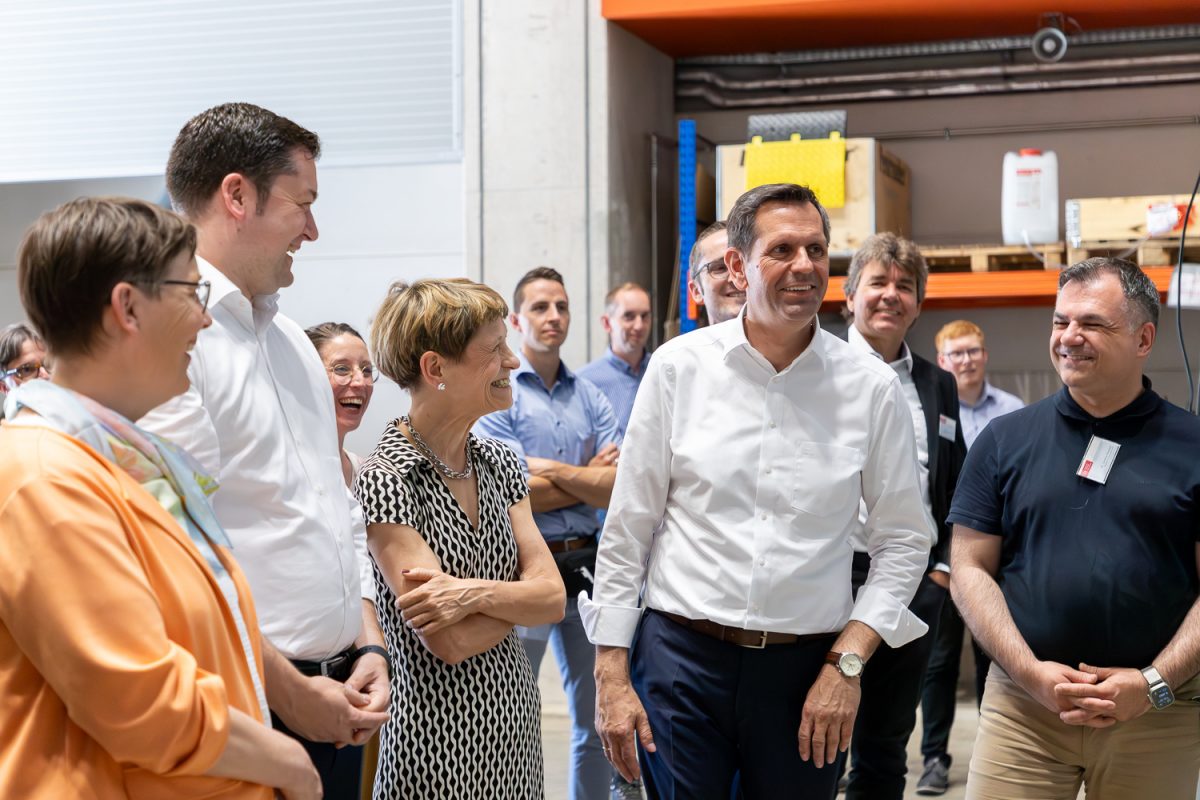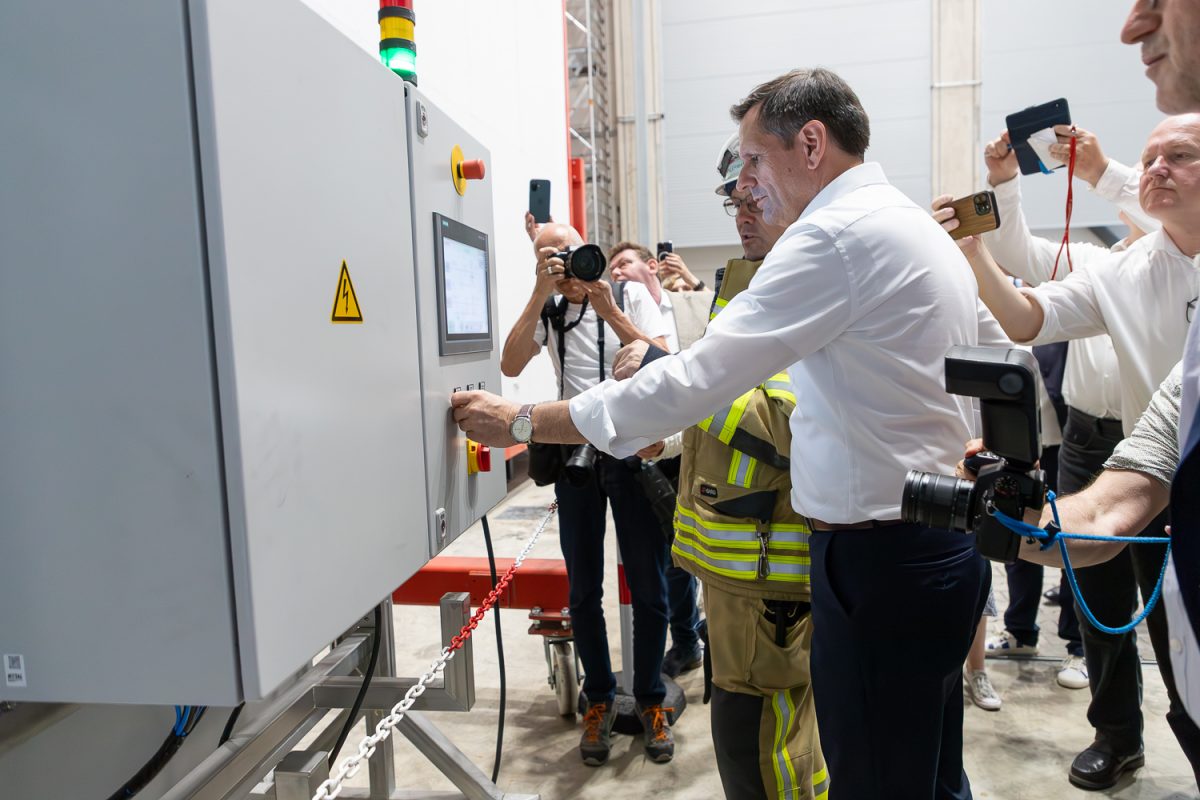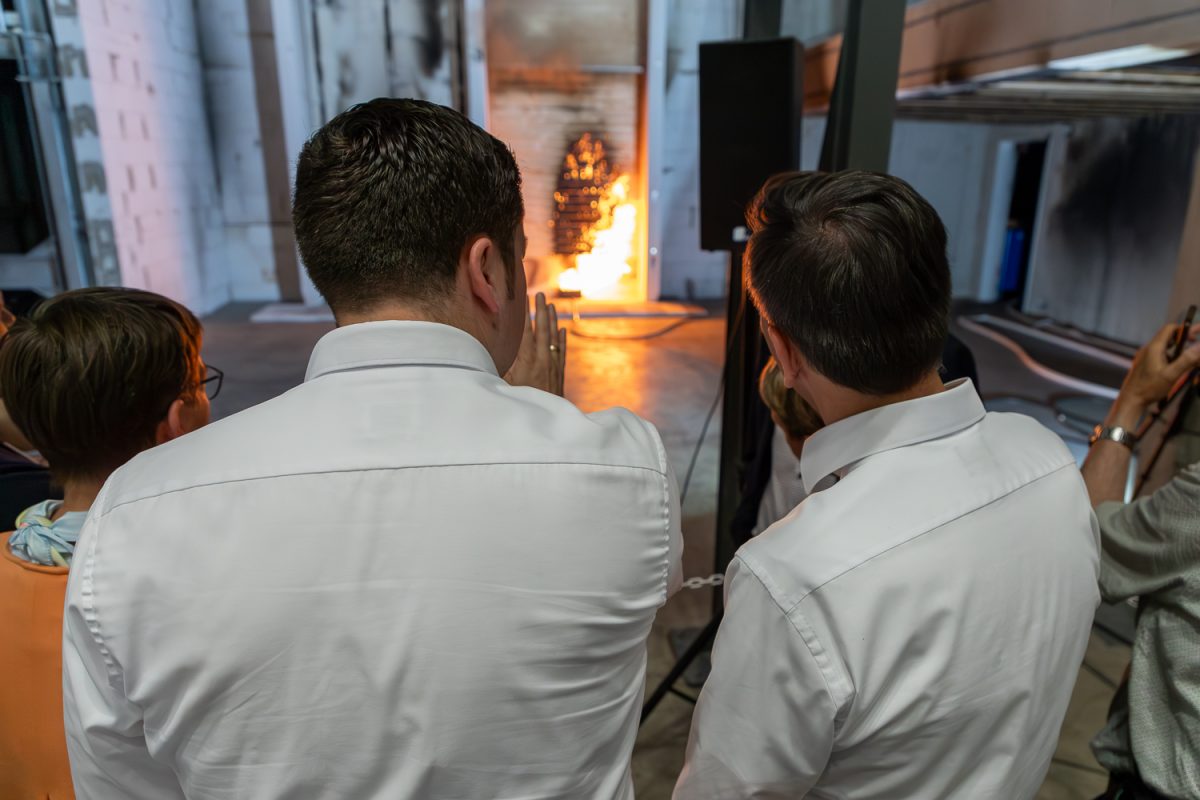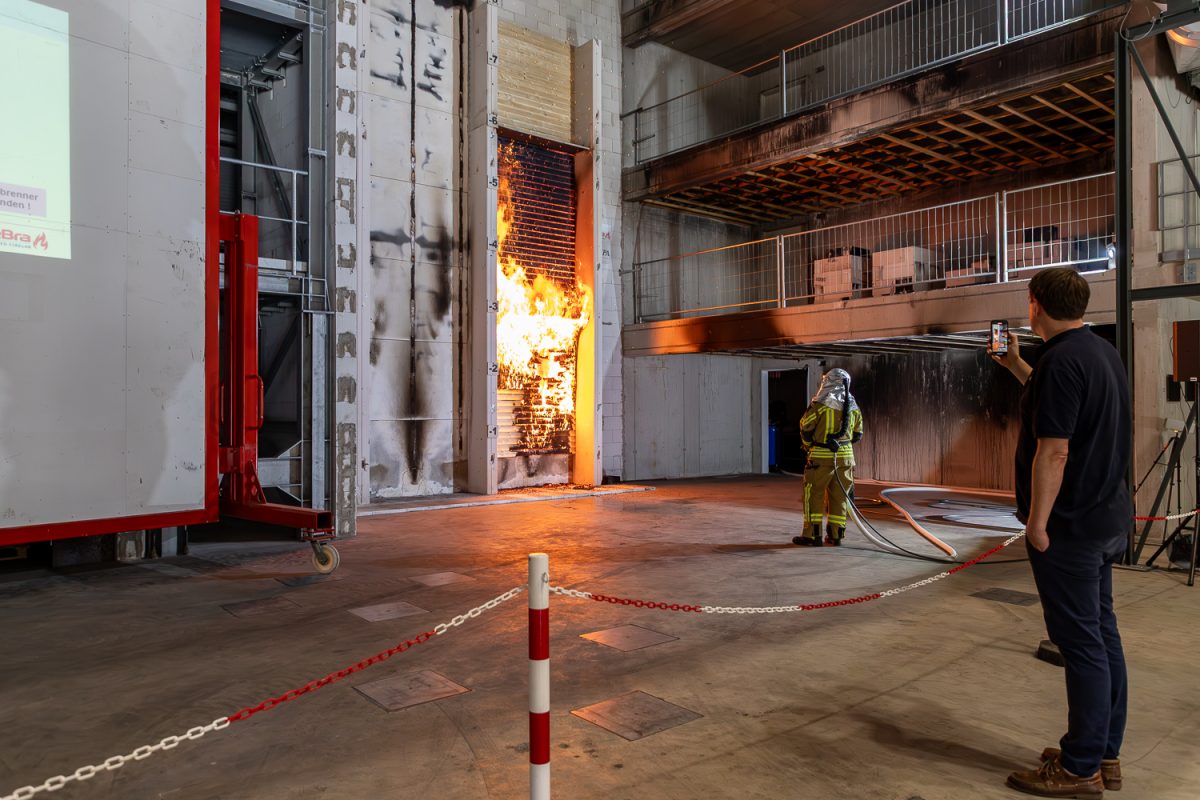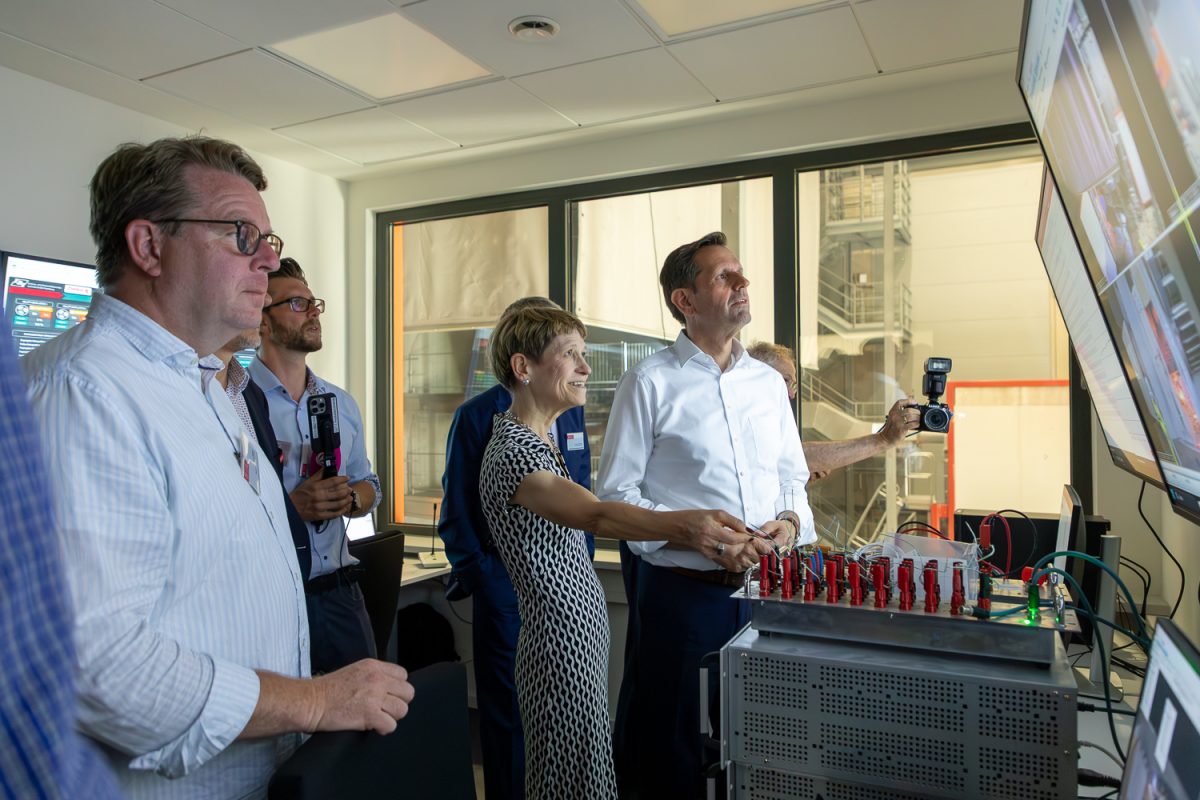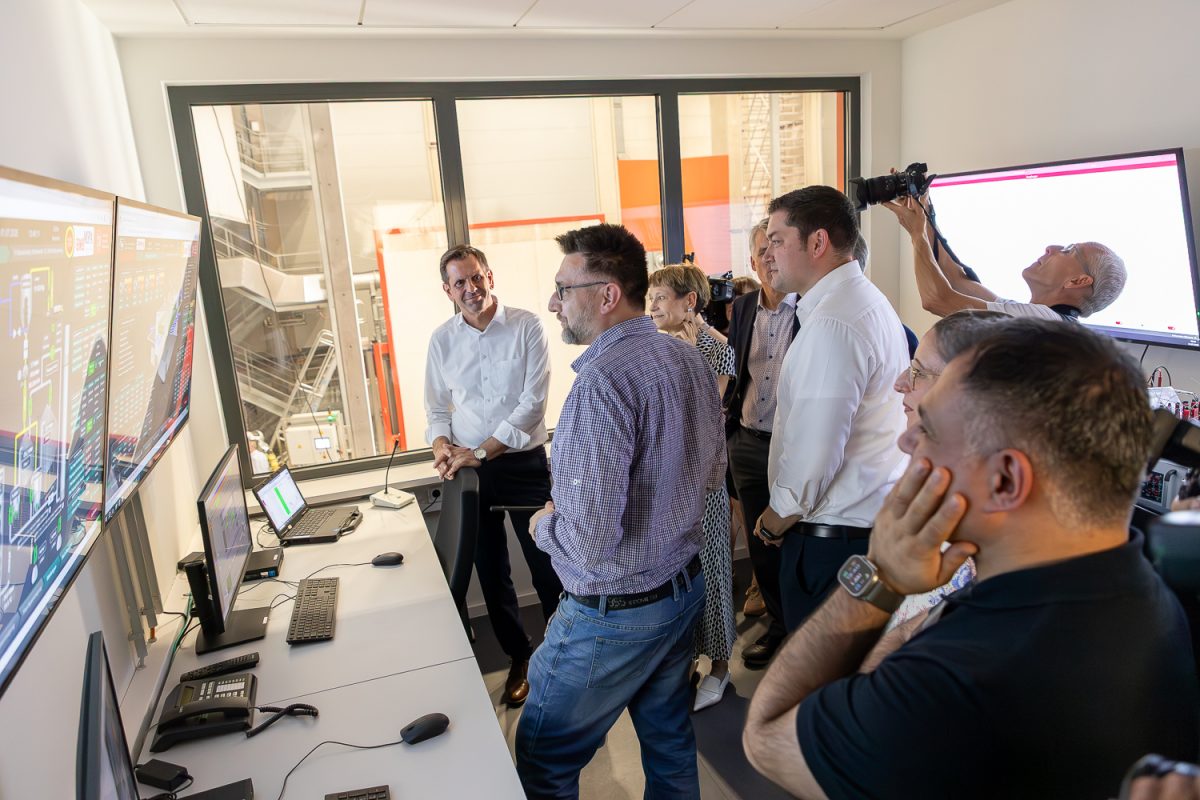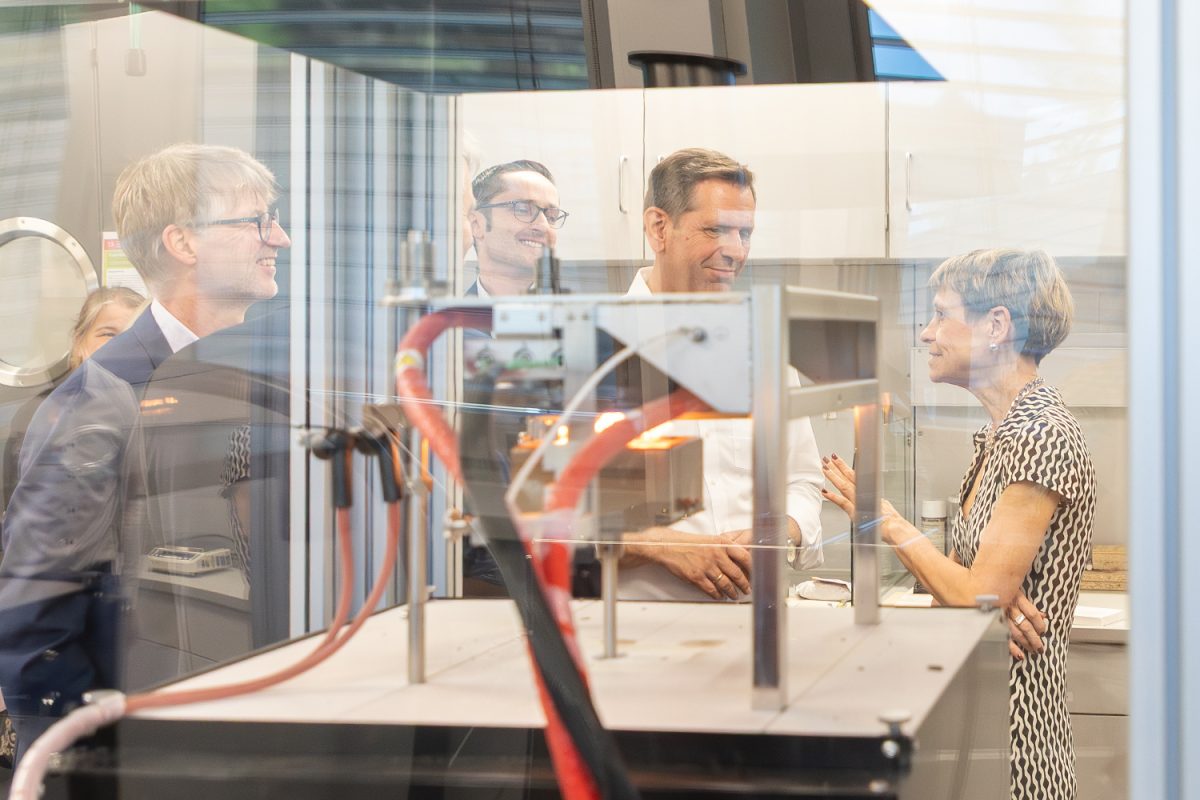The future of fire protection: Olaf Lies visits TU Braunschweig Minister President learns about the Centre for Fire Research and its unique equipment, the only one of its kind in Europe
On 1 July, at the start of his summer tour, Niedersachsen’s Minister President, Olaf Lies, visited the Centre for Fire Research (ZeBra) at Technical University of Braunschweig. The first day of his tour focused on civil protection. A good reason to visit the research facility. ZeBra in Braunschweig offers unique testing facilities in Europe for investigating fires on a real scale – for example, in home furnishings, vehicles and facades.
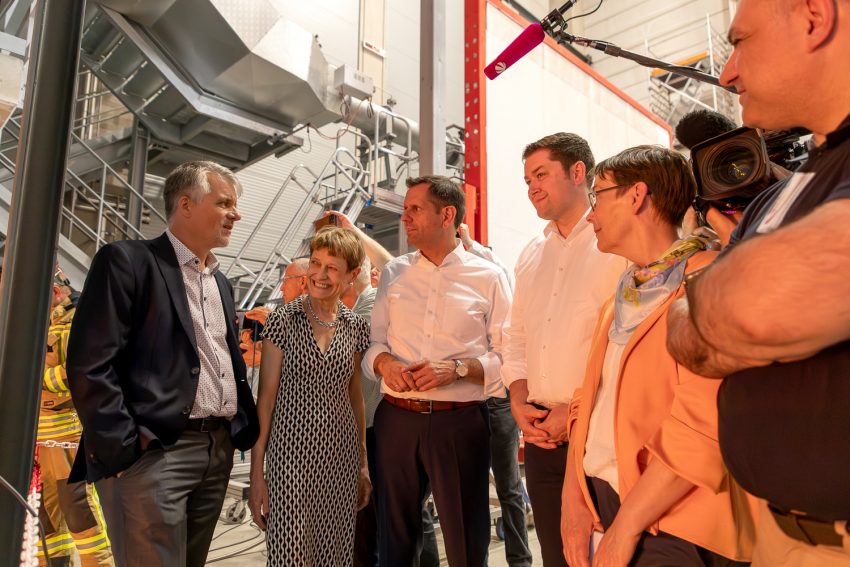
Professor Jochen Zehfuß explained the fire testing process and provided further insights into the research conducted at the Centre for Fire Research. Photo credit: Kristina Rottig/TU Braunschweig
Niedersachsen’s Minister President Olaf Lies: “Scientific findings are essential for the further development of civil protection. Only through sound research can we understand how new materials, construction methods or energy sources behave in the event of a fire and react accordingly. The Centre for Fire Research at TU Braunschweig is doing pioneering work in this field, impressively demonstrating how cutting-edge research can contribute to saving lives. Cooperation with fire brigades, disaster control and authorities is also particularly important here. Only by joining forces can science and practice strengthen the protection of the population in the long term.”
“We are honoured by the Minister President’s interest in our research, which is valuable recognition of the outstanding work of our scientists. With the Centre for Fire Research, we have created unique infrastructure in Europe, combining basic research with highly relevant applications for civil protection. In light of climate change, new building materials and urban densification, reliable findings are more important than ever in order to improve our understanding of risks and rethink safety measures. Our scientists are making a decisive contribution here. As a technical university, we not only enable excellent science, but also develop solutions to the major challenges of our time in close cooperation with industry and society,” emphasises Angela Ittel, President of TU Braunschweig.
A fire laboratory of superlatives
At the Centre for Fire Research, headed by Professor Jochen Zehfuß, scientists can investigate the fire behaviour of innovative construction methods using renewable raw materials and products from the energy transition. This contributes to improved fire safety.
During his visit, Minister President Lies gained insights into the various areas of the research building, including the test hall, the smoke gas cleaning system, the control room, and the laboratory. The heart of the facility is the 23-metre-high experimental hall. With its 12-metre-high facade test rig and large calorimeter for open-flame tests on electric vehicles, buses and high-voltage storage systems, ZeBra is unique in Europe. Here, fires with a heat release rate of up to 20 megawatts can be studied under realistic conditions.
Minister President Lies was able to observe a large-scale test first-hand. To this end, Professor Zehfuß’s team set fire to a multi-storey wooden facade. In the test, the scientists demonstrated the effect of fire barriers. These can be used to effectively limit the spread of fire within the facade. A methodology for determining key parameters for the fire behaviour and ignition of building materials was also demonstrated in a small-scale experiment, and this will be incorporated into computer models. These simulations can then be verified in large-scale trials.
Science meets the fire brigade
Given the increasing use of new construction methods involving wood, hemp and digitally manufactured components, there is a growing need for reliable fire protection research. ZeBra addresses precisely these issues in an interdisciplinary and practical manner. Experts in civil engineering, chemistry and process engineering are working together to understand the fire behaviour and hazard potential of new materials. They are also working with the fire brigade to test suitable extinguishing tactics and procedures. In a large-scale experiment with the Hamburg fire brigade, for instance, they examined a fire scenario involving a three-storey wooden façade with renewable insulation materials. Data obtained from experiments is fed directly into computer-aided models, which will enable fires to be simulated more quickly and accurately in future.

